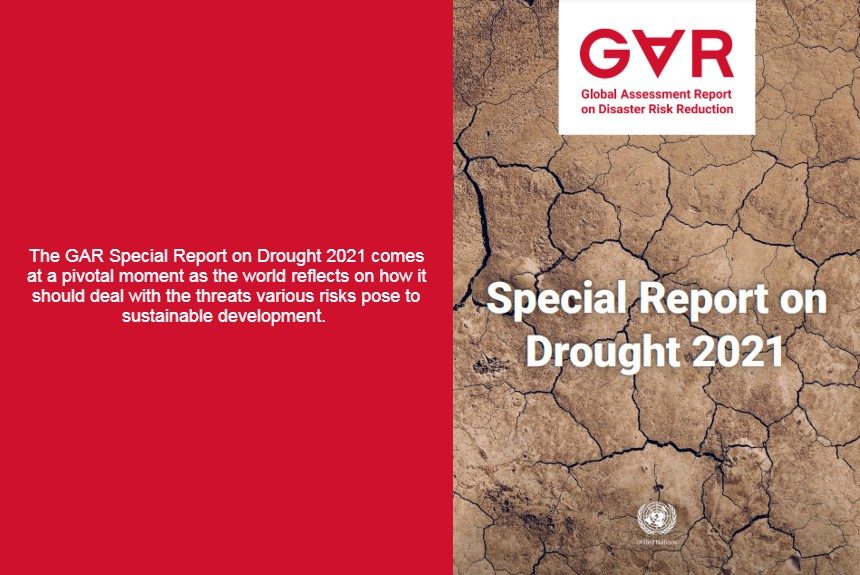The United Nations Office for Disaster Risk Reduction (UNDRR) published the “Special Report on Drought 2021” that “explores the current understanding of drought risk, its drivers and how people, economies and ecosystems are exposed and vulnerable. It highlights that climate change is increasing the’ frequency, severity and duration of droughts in many regions worldwide. It calls attention to the unreadiness worldwide to respond effectively to the significant risks posed by drought” (UNDRR, 2021).
According to the report, drought has severe and wide-ranging impacts on communities, ecosystems, and the economy. Its actual effects are significantly underestimated and can linger long after the event has passed.
Drought affects more than the agriculture sector and can disrupt water supply and energy production, negatively impacting human health, biodiversity, and ecosystems. As with most hazards and disasters, droughts expose existing social and economic inequalities affecting the poor and the most vulnerable members of society.
Climate change will make droughts more frequent and severe in some parts of the world. A lack of awareness and underestimation of drought’s impacts can lead to an ineffective government and policy response. However, increasing understanding of drought can help reduce the risk and buffer its effects.
How well society copes, the availability of tools, and effective governance will increasingly become vital in reducing the cost of the event.
The report aims to address these issues by presenting case studies of drought worldwide—their lived experiences of how they have coped and responded to it—providing a new approach to reducing and managing the risks.
According to the report, “The new approach is based on effective models of governance where communities actively learn and adapt, while seeking to prevent and mitigate drought risk, and adapt and respond to drought. These processes build capacity across social, financial, institutional and scientific communities to recognize the complex nature of drought risk, devise risk reduction approaches and build the capacity to adapt as drought risk changes. This report also identifies enabling conditions that can transform local, national and global drought management. The new approach is based on effectiveness.”
The 200+ page report is structured into four chapters.
- Chapter 1 presents the developing understanding of drought and describes the components of drought risk (hazard, exposure and vulnerability). The breadth and complexity of drought impacts are defined within the context of growing risks climate change poses.
- Chapter 2 explores 17 case studies, which provide a cross section of the world’s recent experiences of drought. The Annex to this summary for policymakers outlines the case studies, and full versions are available online at: https://www.undrr.org/ publication/gar-special-report-drought-2021
- Chapter 3 highlights the need to build drought resilience through systemic risk management approaches. It outlines the transformation needed in governance to match the diversity of actors and viewpoints with the widely varying nature of drought. It highlights key enablers, partnerships, capacities and strategies inherent in a systemic approach to drought risk management across scales.
- Chapter 4 concludes the report with a call to action that applies to all stakeholders. The report highlights options to be explored and ways to navigate and negotiate through the complex damaging risk. However, it does not claim to provide a single prescriptive solution to the challenge of drought.
To read the report, click the links below:
Watch the UNDRR GAR Special report on drought launch promo video below:
Source Citation:
United Nations Office for Disaster Risk Reduction (2021). GAR Special Report on Drought 2021. Geneva. Retrieved from https://www.undrr.org/publication/gar-special-report-drought-2021



Leave a Reply